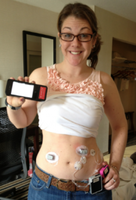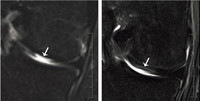
Chromogranin ELISA CHR31-K01
Expiring (10/31/14)
Osteocalcin ELISA OST31-K01
Expiring (11/30/14)
Vitamin B2 HPLC Assay VB231-H100
Expiring (11/22/14)

Chromogranin ELISA CHR31-K01
Expiring (10/31/14)
Osteocalcin ELISA OST31-K01
Expiring (11/30/14)
Vitamin B2 HPLC Assay VB231-H100
Expiring (11/22/14)

The bionic pancreas is just what it sounds like, a potential superhero for diabetics! It is a prototype device that has been designed to reduce the constant
burden of monitoring and adjusting blood sugar levels for the millions of
people with this disease. These trials so far have demonstrated its ability to not
only reduce the average blood sugar and reduce the risk of low blood sugar but
also to calculate the number of carbohydrates the diabetic is eating and
automatically give insulin as needed. The
current model consists of three parts but will eventually be manufactured as a
single unit. Read more
This
product is still in the testing and trial phases but so far it has generated a
lot of attention in the scientific community and hope for these individuals and
their families. Read more
All of us have family, friends, or people we know who have
this disease. In fact, according to the CDC over 9% of the population in the
United States has diabetes. Could it really be possible for one device
to make such a difference? After learning a little bit about this device,
we decided to find out what a couple of the diabetics in our lives
thought. One of these individuals
commented, “This is phenomenal, the ability to improve my health and lifestyle
with one device is just amazing.” However, this excitement also comes with some concerns like “will
insurance cover it and if not, then only a select few could afford it.” Another
individual stated, “I absolutely want one of these. Not having to count my carbs, prick my
finger, or carry multiple devices…would make my life so much easier.”
Now let us know what you think.
Related articles:
Bionic Pancreas’ Helps Control Blood Sugar in Type 1 Diabetes
Outpatient Glycemic Control with a Bionic Pancreas in Type 1 Diabetes
Bionic Pancreas Outperforms in Adults, Youth

Image above from www.viralglobalnews.com
Everyone out there who contributed to supporting the ALS
Foundation should be patting themselves on the back. The awareness that you
created and the funding that you have provided the organization has led to $109.1
million in Ice Bucket Challenge donations! And this article is evidence of the
difference that these donations will continue to make towards working to
a cure. Examining the roles of two genes in a two separate cohorts of fruit
flies has led to interesting findings that may eventually help researchers
determine how to intervene. Read more
Nashua, NH: Eagle Biosciences announces the
product launch of a handful of robust kits including Free Beta HCG ELISA, PAPP-A ELISA, Calcitonin ELISA, Renin ELISA, and Troponin I ELISA. These assays were developed by Diametra in
Italy (www.diametra.com) and will be great additions to our steroid hormone,
bone metabolism, and oxidative stress lines respectively. Diametra develops and manufactures innovative
products in target diagnostic segments such as autoimmune diseases, fertility,
and a wide variety of other research areas. They pride themselves on the quality of their products and providing top-notch
service thus aligning well with Eagle Biosciences’ goals and philosophies.
Free Beta HCG ELISA and the PAPP-A ELISA are very
sensitive and specific assays that provide quick results within a couple of
hours. These analytes provide tremendous value to pregnancy and fertility
research as a whole in terms of predicting abnormal pregnancy/disease states. The
third product launched is the Calcitonin ELISA which utilizes simultaneous capture
of an antigen by two monoclonal antibodies that provide the kit with excellent
specificity with no interferences from other hormones.Calcitonin is useful in several research
areas and has particular importance in research/diagnosis of medullary thyroid
cancer and the study of the pathophysiology of calcium and bone metabolism. Renin ELISA and Troponin ELISA, the last two
kits in the new cohort of products from Diametra offer a wide dynamic range and
excellent sensitivity.Together they
will provide accurate and valuable results to researchers studying hypertension
and myocardial damage respectively.
“It is always our goal to provide quality
products that meet researchers’ needs and these products from Diametra do just
that.” said Dan Keefe, President of EagleBio. He continued, “These assays all serve a unique purpose in a variety of
emerging areas of research and they certainly will complement their respective
product lines well.”
Eagle will be offering promotional pricing for
the Free Beta HCG ELISA, PAPP-A ELISA, Calcitonin ELISA, Renin ELISA, and
Troponin ELISA within the next few months. These products are currently for
research use only. Check out the Eagle website www.EagleBio.com or call
866-411-8023 for full details.


With over 100 publications to date, the ADMA ELISA Assay kit offered by DLD Diagnostika and Eagle Biosciences has demonstrated that it is the clear gold standard assay for measuring ADMA. Check out the product pages for full information, or find the link below to the complete listing:
For a Full Listing of Publications utilizing these ADMA ELISA Assay kits, click on the link below:
ADMA ELISA Assay Kit Publications


Millions of
people suffer from osteoarthritis and/or joint disease.These diseases are caused by the loss of
articular cartilage within your joints which serve the purpose of providing
cushioning at the end of your bones.The
most common treatments for this are painful injections and joint replacements.
But recent research involving treating
cartilage defects with nasal septum cells may bring hope to these patients.
Perhaps many of you out there are wondering…cells from nose to knee…what?! What
will they come up with next!? Read more


We spend so much time trying not to get sun exposure so we can prevent skin cancer only to find out that as a result we are not getting the vitamin D we need.
So what’s the deal? Are we going to become feeble with a lack of vitamin D? It turns out that not getting enough of this super vitamin could lead to several medical conditions/diseases. Read more
In
fact, here are 10 reasons to keep up your vitamin D
levels:
Several Types of Cancers
High Blood Pressure
Heart Disease
Depression
Fibromyalgia
Chronic Muscle Pain
Bone Loss
Diabetes
Other Autoimmune Diseases Such as Multiple Sclerosis
And last but certainly NOT least…
Alzheimer’s and
Dementia
In a recent study, individuals over age 65 had their Vitamin D levels tested and then they were followed for a number of years:
During
this follow-up period, 171 of the participants developed dementia and 102
participants developed Alzheimer’s disease. The researchers found the
participants with low levels of vitamin D were 53% more likely to develop
dementia, and those who were severely deficient were 125% more likely, when
compared with participants with regular levels of vitamin D. Read more
This research is intriguing because Alzheimer’s is killing more people each year, in fact even
more than prostrate cancer and breast cancer combined. Recent research in this area has revealed
that this disease is caused by a build up of abnormal proteins such as
beta-amyloids in the brain.This leads
researchers to believe that genetic testing (for APOE) for early intervention
and therapy that will either decrease amyloid-beta production or increase the
degradation of these proteins could be beneficial to these patients. Read more
Alzheimer’s is extremely
underfunded especially when compared to other areas of research. Scientists are making some head way in this
area but the lack of funding is dramatically hindering the path to a cure.
So we ask all of you…Shall we tackle
this problem like supporters of the ALS foundation did with the Ice Bucket Challenge?
Using the right timing (we might need to let
the ice bucket challenge finish its course) and the right challenge it might
work! Let us know if you have any good
ideas for such a challenge and perhaps this time lets make it involve something other than water! It needs
to be quick and/or funny and powerful! Give us ideas! Ready, Set, Go!
And if you want to donate to the
Alzheimer’s Association Click here

Product Discounts available through the end of August 2014:
Intact FGF-21 ELISA at a 30% discount:
Eagle
Biosciences is pleased to introduce the first Intact FGF-21 ELISA assay kit
that truly measures the active human intact FGF-21 (1-181) with no cross
reaction to any FGF-21 fragments. Other assays that determine fragments of the
FGF-21 can overestimate the biological activity of the protein. The
physiological functions of FGF-21
require intact molecular structure and amino acid sequence in its N-terminal
and C-terminal region.
Use
Code FGF0830 when ordering to take advantage of this discount.
Click here to view the:
FGF-21 ELISA PROMOTION
Looking for work? The Tooth Fairy may be recruiting new talent.
Is it possible that the days of the tooth fairy visiting your house and leaving
your child money are over?! We may have to start paying her for her newly
acquired task. New research is being done to investigate the process of nerve
cells spontaneously forming into stem cells. Read more
This opens doors for a variety of emerging areas of research and therapies such
as Diabetes, spinal cord injuries, and several other diseases/medical conditions. One company has taken
advantage of this opportunity and has started offering a bank to store teeth
for those who may need or worry about needing stem cell therapy in the future. Read more
So I ask you… do we need to leave special instructions under our child’s
pillow for the Tooth Fairy if we want their teeth to be delivered to
Store-a-Tooth to become toothsicles?!
But in all seriousness, this is fascinating research that could lead to amazing medical breakthroughs.



View the latest information, products, and promotions from Eagle Biosciences on our Eagle i-View Newsletter:
Click here to view the Eagle i-View